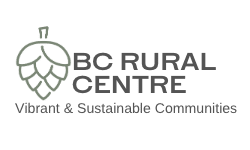
What is Rural Policy Today? A pan-Canadian scan of policies for rural spaces
Rural regions are at the forefront of change. As our great green places—with the vast majority of land and natural resources—they are central to climate change adaptation and mitigation efforts.
Read the full report here: Rural-Policies-CRRF-2022
The rapid need to de-carbonize economies is leading to large new investments in renewable energy infrastructure, transforming rural landscapes and coastlines.
Key industries, from agriculture to forestry, are pressed to adopt more sustainable practices. As places with less diversified economies, the Covid-19 pandemic has revealed how fragile many rural economies can be (e.g., those that are tourism reliant) while at the same time reinforcing their critical importance as producers in the wake of global value chain disruptions. Seeking more affordable housing and more space, many rural regions have seen an influx of newcomers over the course of the pandemic and yet, at the same time, these shifts have reinforced divides between the attraction of those rural regions with high-quality broadband, public services and other amenities, and those without.
Rural strategies and plans serve to bring an important rural vision and lens to a wide range of public sector interventions and investments important to rural places and across its many complex dimensions—in a way that speaks to community diversity while recognizing the need for strategic actions. Rural development strategies are important not just for rural communities themselves, but for local/regional governance more broadly. Within the government/public sector, they serve to highlight rural considerations, complementing the ‘rural lens’ approach to Cabinet submissions for instance. Rural strategies identify opportunities and challenges for the future, signify strategic actions and investments, and signify multi-actor coordination, communications and engagement. Inherently, rural strategies have the challenge of navigating scale and diversity.
What are the characteristics of rural policy today and how do practices differ across Canada? This report shares a pan-Canadian content analysis of rural-related provincial and territorial strategies, plans and programmes. This scan of government websites has identified the lead departments responsible for rural development and searches rural-related related strategies, plans and programmes across the thematic areas of: economic development; climate, energy and natural resources, agriculture; transportation and infrastructure; broadband and connectivity; tourism and culture; and justice and social service (in both English and French). The resulting information was coded in Excel and thematically analyzed in order to develop an overarching understanding of how provincial and territorial governments approach rural policy; how departments coordinate and; whether there are targeted interventions for communities facing economic transition. Rural policies are constantly evolving and this content analysis was conducted over the period of January 5, 2021, and July 30, 2021. It represents a point-in-time snapshot.
Dr. Tamara Krawchenko, Brooke Hayes, Dr. Karen Foster, Dr. Sean Markey
Read the full report here: Rural-Policies-CRRF-2022
Originally posted by CRRF > here
